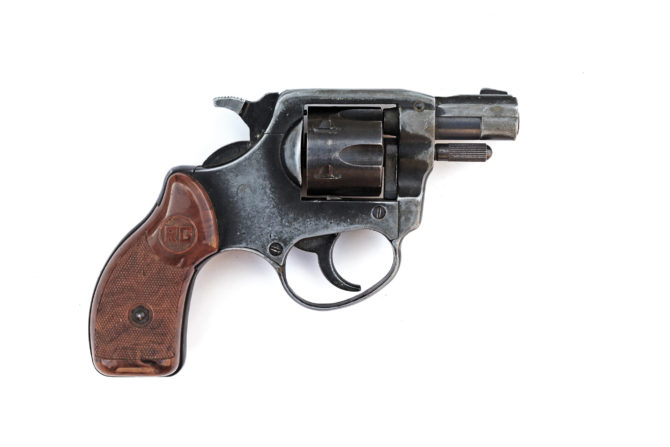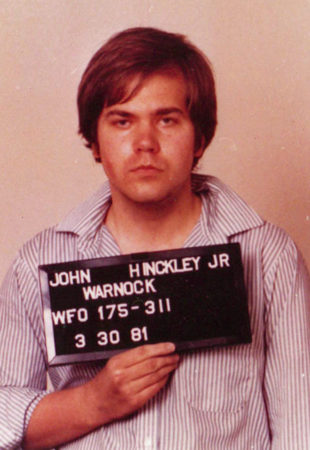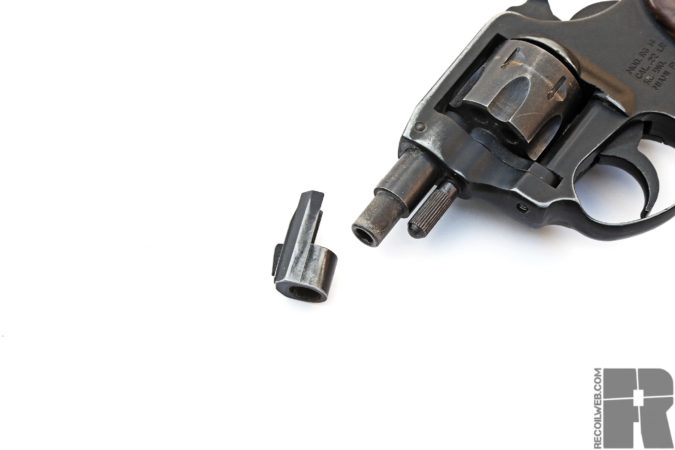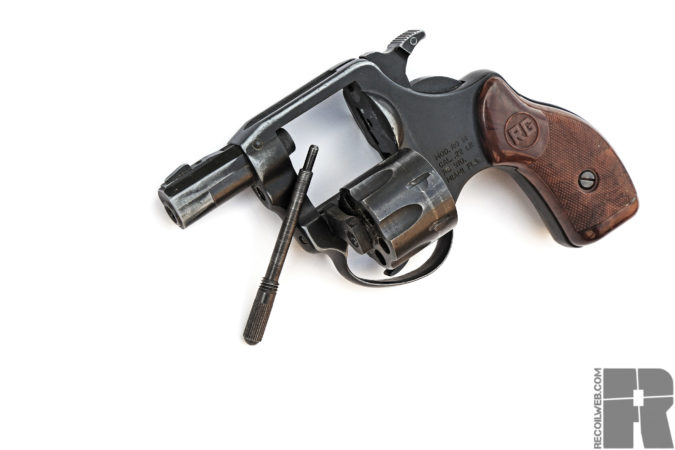
The year is 1981. The nation rejoices over the safe return of hostages from Iran. Ronald Reagan is our newly minted 40th president, the Oakland Raiders won the Super Bowl and even though “The Tide Is High,” Blondie is still holding on to the number-one spot on Billboard’s hit list.
But none of that matters. What matters is that the girl of your dreams, who you’ve been diligently pursuing for years, has paid you no attention. Instead of accepting this tacit rejection, you believe her cold shoulder is only because you’ve failed to make a gesture grand enough to get her to see you clearly. But that’s all about to change. You’re about to make it big, and that girl will finally notice you, because you’re about to bring your favorite movie to life for the world to see.

That movie is Taxi Driver …
That girl is actress Jodi Foster …
And your big plan to win her over? Shoot the f*cking president.
Thus begins — and ends — the story of the .22-caliber RG-14 revolver. At least insofar as mainstream pop culture is concerned. But RG Industries was the U.S.-based division of German firearms company Rohm Gessellschaft which split from its parent company Rohm GmbH in the 1950s. Said parent company was actually known for producing chucking tools before starting the Gessellschaft imprint as a diversification into firearms, which then spawned Miami-based RG Industries in 1968.
The American RG Industries specialized (if you can call it that) in producing revolvers and semi-autos in mouse gun calibers like .22LR, .25ACP, .32S&W, and .38 Special. The guns existed in relative obscurity until March of 1981 when the protagonist of our introduction, John W. Hinckley Jr. used an RG-14 revolver in an attempt to assassinate President Reagan.
As a result, police officer Thomas Delahanty (who was also shot by Hinckley) sued RG Industries. The case was thrown out, but the legal troubles and notoriety compounded with a follow-up case in 1985 involving a convenience store clerk who was also shot by an RG gun. This led to RG Industries folding in 1986. The German side of RG was sold to Umarex in 2010, to what practical end we’re not sure. But no fruits of that acquisition have made it to American shores, as best we can tell.
Fast-forward to a couple of months ago, when we came across this piece of obscure gun history in a consignment case at The Hub AZ in Tucson, Arizona. The wheelgun in question was nested between a police trade-in Glock and an STI Tactical 4.0, and we almost missed it. But as fate would have it, we wound up bringing her home for a meager adoption fee of $200.
THE AWESOME
The single-action trigger on our sample was shockingly smooth with a very consistent 4½-pound break. Other than that, and being relatively inexpensive in a market full of panic buys and indefinite back orders, this gun just doesn’t have much going for it.

THE AWFUL
Because we were so surprised by the single-action pull, and the universe seeks balance, the double-action trigger mode is exactly as awful as one would expect from a revolver of this class. Also, don’t count on reloading this gun in any kind of a hurry. The ejector rod under the 1-inch barrel isn’t an ejector at all. It’s a pin that screws into the back of the frame that must be unscrewed and completely removed for the cylinder to be popped out.
Empty cases must then be plucked out individually by fingernail and fresh rounds threaded in before the cylinder is closed and the retention screw wound back into place. Finally, the barrel is an odd two-piece design consisting of the bore itself sleeved by a shroud that includes the token front sight. Directly behind the sight blade is a hole that, apparently, is supposed to have a pin of some kind pressed into it. But the pin is missing, which means you can pluck the barrel shroud, including front sight, off the gun at will. And sometimes by accident.
Also squarely in the “awful” column is the so-called Devastator “exploding ammunition” that Hinckley used in his botched attempt to woo Ms. Foster. The rounds essentially consisted of a second primer embedded in the nose of the bullet meant to detonate on impact and cause immediate fragmentation. The rounds didn’t work as planned — although its noteworthy that, at the time, it was a big enough concern that the surgeons who removed one of these rounds from President Reagan were wearing flak jackets while they worked.

CONCLUSION
The RG-14 is a macabre-conversation-starter of a coffee table gun. When people see it in your safe, you’ll be able to tell them all about the one thing it’s known for. It has little to no redeemable value otherwise, but that’s OK. Some pistols are destined to serve as relics of history to be passed down along with their stories. While the story of the RG-14 isn’t a particularly happy one, it’s nonetheless an obscure, but important piece of Americana.
RG INDUSTRIES RG-14
Purchased From: The Hub (Tucson, AZ) // thehubaz.com
Caliber: .22LR
Weight Unloaded: 15.2 ounces
Capacity: 6 rounds
Length: 5 inches
Barrel: 1.5 inches
Price Paid: $200